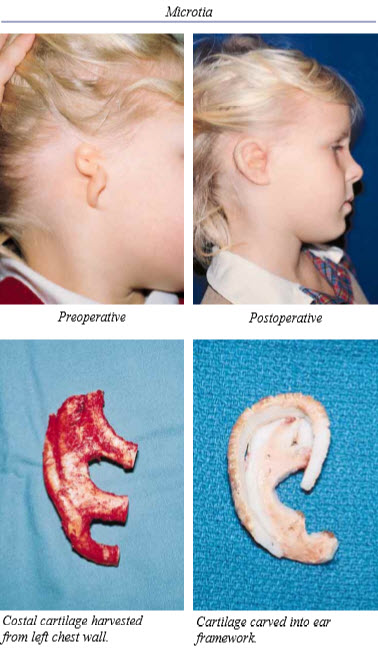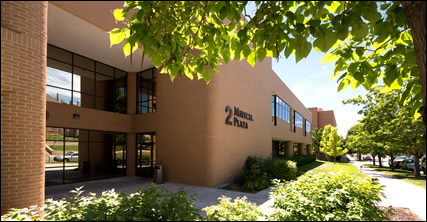Microtia
Reconstruction of the ear is one of the most challenging problems facing a reconstructive surgeon as it demands precise technique combined with artistic creativity. Microtia is a congenital deformity of the external ear where the auricle (the external ear) is severely deformed. There may be a spectrum of external ear deformities with various degrees of involvement of the middle and inner ear. This type of ear deformity is commonly seen in patients with hemifacial microsomia and Treacher-Collins syndrome.
Psychological effects of an ear deformity play a significant role in timing of reconstruction. Most surgeons prefer to initiate treatment when the patient is between 5 and 7 years of age since this early intervention will reduce anxiety as a result of peer pressure. This also allows for sufficient rib growth to provide the quantity of cartilage needed by the surgeon for adequate framework fabrication. Surgery at this time can give a more consistent result than earlier intervention due to the fact that the child has had a chance to grow, thus making it easier for the surgeon to balance the size and shape of the reconstructed ear to the child’s normal ear.
Reconstruction of the ear is one of the most challenging problems facing a reconstructive surgeon as it demands precise technique combined with artistic creativity. Microtia is a congenital deformity of the external ear where the auricle (the external ear) is severely deformed. There may be a spectrum of external ear deformities with various degrees of involvement of the middle and inner ear. This type of ear deformity is commonly seen in patients with hemifacial microsomia and Treacher-Collins syndrome.

Psychological effects of an ear deformity play a significant role in timing of reconstruction. Most surgeons prefer to initiate treatment when the patient is between 5 and 7 years of age since this early intervention will reduce anxiety as a result of peer pressure. This also allows for sufficient rib growth to provide the quantity of cartilage needed by the surgeon for adequate framework fabrication. Surgery at this time can give a more consistent result than earlier intervention due to the fact that the child has had a chance to grow, thus making it easier for the surgeon to balance the size and shape of the reconstructed ear to the child’s normal ear.
The treatment of microtia involves surgical reconstruction of the external ear framework. Ear reconstruction requires a carefully planned, staged reconstruction that involves 3-4 operative procedures. The first procedure involves the construction of the cartilage framework for the ear. Under general anesthesia, donor cartilage for the frame is obtained en bloc from the rib area contralateral to the ear being reconstructed to take full advantage of the cartilage’s natural curvature. Working from pre-surgical templates that have been drawn as well as from photographs, the surgeon then carves the cartilage into its new shape and carefully positions the graft into position. The overlying skin then redrapes to the newly carved cartilage framework. Subsequent operations are required to rotate the lobule and to elevate the framework into its final position.

It is of significance to note that if there is normal hearing in one ear, surgery to improve hearing in the abnormal ear is not recommended. Almost 90% of all patients with microtia have only unilateral involvement and quickly adjust to this condition following birth. Potential gains from working on the middle ear are outweighed by the inherent risks of the surgery itself. Therefore, middle ear surgery should be performed only on the true bilateral microtia patient or the patient with significant hearing loss in both ears.





















